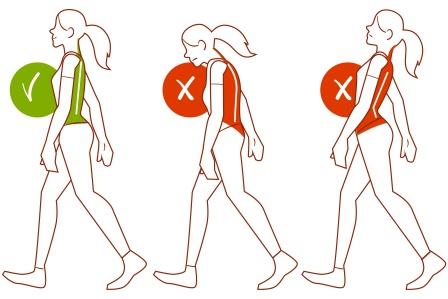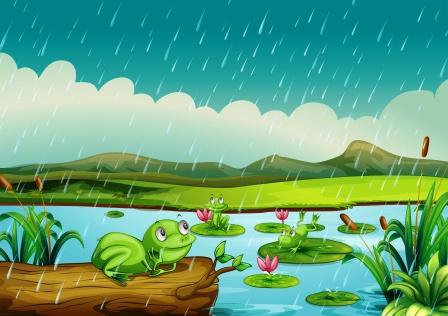Different Causes For Vata Dosha Imbalance, Increase
The below are the various causes for Vata Dosha imbalance or aggravation. The causative factors are divided based on food, activities, etc.
Table of Contents
Vata imbalance causes
Ill effects of excessive indulgence:
Ashtanga Hrudayam Sutrasthana 2nd chapter:
व्यायामजागराध्व स्त्रीहास्य भाष्यादिसाहसम् ।
गजं सिंह इवाकर्षन् भजन्नति विनश्यति ॥ १४ ॥
vyāyāmajāgarādhva strīhāsya bhāṣyādisāhasam |
gajaṃ siṃha ivākarṣan bhajannati vinaśyati || 14 ||
If indulged in excess,
Vyayama – exercise,
Jagara – keeping awake at night,
Adhva – walking,
Stri – sexual activities,
Hasya – laughter and
Bhashya – talk
would destroy an individual like a lion perishing while attacking an elephant.
What leads to imbalance of Vata?
General causes:
Improper food habits, untimely eating, fasting
Undisciplined lifestyle
Stress and worries
Sleep disturbances
Excessive indulgence in physical exercises and workouts and sexual act
Not properly following the daily and seasonal regimen advocated in the science
Forcible suppression or expulsion of natural urges as those of fart, faeces, urine, hunger, thirst, sleep etc
Quality based causes
Vata imbalance causes based on its qualities:
Cold –
During winter, pain in joints usually increases.
Because cold quality causes increase in Vata and joints are the place where Vata is present, so, pain increases.
Taking cold food stuffs increases Vata Dosha
Lightness (opposite of heaviness):
Air and ether – combination is light.
Any food that is light to digest, which undergoes digestion very quickly, tends to increase Vata. Eg: Light Pohe,
Underweight people have Vata dominance. Fasting, excessive walking, excessive exercises and all such measures taken for weight loss increase Vata Dosha.
Dryness (opposite to moistness and oiliness)
Blowing wind dries up the moisture.
Skin dryness during winter is due to Vata.
Cold is a quality of Vata, and so is dryness.
During winter, cold increases Vata at the level of skin and causes increase in dryness.
Vata in the large intestine dries up the waste part of food to form stools.
Whichever the foods that cause dryness of skin, dryness of mouth and dry stools, increase Vata Dosha. For example, spicy foods, bitter and astringent tasting foods – these cause dryness and they increase Vata Dosha.
During winter, there is dryness of skin. This implies Vata dosha has increased at the level of skin.
Movement quality of Vata Dosha
All body movements are controlled by Vata.
– Voluntary
– Involuntary
Excessive travelling, walking, riding horses, causes Vata Dosha increase
Causes as per Charaka
Causes for Vata increase as per Charaka Samhita, Chikitsa Sthana 28th chapter:
- Ruksha Aahaara – Dry foods
- Sheeta Aahaara – cold foods
- Alpa anna – less quantity of food
- Laghu anna – foods which are light to digest
- Ati vyavaaya – excessive indulgence in sexual activities
- Ati prajaagaraihi – excessive awakening during night times
- Vishama Upachaara – Improper administration of treatments mainly cleansing treatments like Vamana (therapeutic emesis), Virechana (therapeutic purgation) etc
- Ati dosha sravana – excessive elimination / discharge / elimination of doshas
- Ati asruk sravana – excessive bleeding
- Langana – excessive running
- Plavana – excessive jumping
- Ati adhwa – excessive walking
- Ati Vyayama – Excessive exercises
- Dhatu Kshaya – Depletion of tissues
- Chinta – excessive thinking, stress
- Shoka – excessive grief
- Ati roga karshanaat – debility due to chroming and longstanding diseases
- Vega sandhaarana – forcible withholding of natural urges
- Aama – undigested food in circulation
- Abhighaata – accident, trauma
- Abhojana / Apatarpana – Deficit intake of food, fasting in excess
- Marma abaadha – injury to Marmas or vital points in the body
- Gaja, Ashwa, Ushtra sheegra yaana – riding on elephants, horses and camels regularly and in quick pace
- Prapatanaat – falling down from the animals (while riding them)
Other causes –
- Bhanga – Fractures
- Ati shuchi – Excessive administration of cleansing procedures (Panchakarma)
- Shaityadi – Excessive consumption of cold foods and activities
- Traasaat – Fear
- Kshobha – Irritation
- Kashaya – Excessive consumption of astringent foods
- Tikta – Excessive consumption of bitter foods
- Katu – Excessive consumption of pungent foods
- Vari-ghanagame – cloudy and rainy season
- Parinate anne – After the digestion of food
- Aparahne – Evening
Specific causes:
- Vyayama – Excessive exercises
- Apatarpana – Fasting in excess
- Prapatana – Fall, injury
- Bhanga – Fractures
- Kshaya – Depletion of tissues
- Jaagarat – Excessive vigil (awakening all night)
- Veganam cha vidharanat – Suppression of natural body urges (reflexes)
- Ati shuchi – Excessive administration of cleansing procedures (Panchakarma)
- Shaityadi – Excessive consumption of cold foods and activities
- Traasaat – Fear
- Ruksha – Excessive consumption of dry foods
- Kshobha – Irritation
- Kashaya – Excessive consumption of astringent foods
- Tikta – Excessive consumption of bitter foods
- Katu – Excessive consumption of pungent foods
- Vari-ghanagame – cloudy and rainy season
- Parinate anne – After the digestion of food
- Aparahne – Evening
Vata increasing foods
Foods that cause Vata Dosha increase:
Aadhaki (Cajanus cajan)
Bisa (Nelumbuo nucifera)
Chanaka (Cicer arietinum)
Chirbhata (Cuccumus melo)
Harenu (Pisum sativum)
Jaambava (Eugenia jambolena)
Kalaya (Lathyrus sativus)
Kalin’ga (Holarrhena antidysenterica)
Kariya (Cappaaris deciduas)
Koradusha (Paspalum scrobiculatum)
Masoora (Lens culinaris)
Mudga (Phaseolus mungo)
Nishpaava (Hygroryza aristata)
Neevara (Hygroryza aristata)
Shaluka (Nelumbium speciosum)
Shushka shaaka (Dry vegetable)
Shyaamaka (Setaria italica)
Tinduka (Diospyros tomentosa)
Trunadhaanya (Grassy grain)
Tumba (Lagenana valgaris)
Uddalaka (A variety of Paspalum scrobiculatum)
Varaka (Carthamus tinctorius)
Virood’haka (Germinated Seed)
Qualities of food and activites that cause Vata increase:
Rooksha – dry foods, activities (such as powder massage)
Laghu – light to digest foods and activities
Sheeta – Coolant foods and activities
Khara – roughness
Sookshma – minuteness
Chala – movement
Foods that cause constipation increase Vata Dosha.
Vata increasing tastes
Tastes that cause Vata Dosha increase:
Kashaya – Astringent
Katu- spicy, pungent
Tikta – bitter
Vata increasing activities
Activities that cause Vata Dosha increase:
Abhojana (fasting)
Alpaas’ana (dieting)
Vishmaas’ana (Taking unequal food)
Adhyas’ana (eating before digestion of previous meal)
Jeernanta (After digestion)
Pramitas’ana (Taking food in improper time)
1.Mithyayoga – wrong activities that cause Vata Dosha increase:
As’mabhramana (Whirling stone)
As’machalana (Shaking of stone)
As’mavikshepa (Throwing of stone)
As’motkshepa (pulling down stone)
Balavat vigraha (wrestling with superior healthy one )
Damyagaja nigraha (subduing unteameable elephant) cow and horse
Divaasvapna (day sleep)
Dukhaasana (uncomfortable sitting)
Dukhas’ayya (uncomfortable sleeping)
Ghadhotsadana (strong rubbing)
Kasht’abhramana (whirling of wood)
Kasht’achalana (shaking of wood)
Kasht’a vikshepa (throwing of wood)
Kasht’otkshepa (pulling down wood)
Lohabhramana (whirling of metal)
Lohachalana (shaking of metal)
Lohavikshepa (Throwing of metal)
Lohotkshepa (pulling down metal)
Paragatana (strike with others)
Shilabhtamana (Whirling of rock)
Shilachalan (Shaking of rock)
Shilavikshepa (Throwing of rock)
Shilotkshepa (Pulling down rock)
Bhaaraharana (Head loading)
Vegadharana (Voluntary suppression of natural urges)
Vegodeerana (Forceful drive of natural urges)
Vishamopachara (Abnormal gestures)

Excess indulgence of following activities lead to Vata increase:
Atigamana (excessive walking)
Atihaasya (Loud laughing)
Atijrumbha (Loud yawning)
Atikharacapakarshana (Violent stretching of the bow)
Atilan’ghana (Leaping over ditch)
Atiplavana (Excessive bounding)
Atiprabhashana (Continuous talking)
Atipradhavana (Excessive running)
Atiprajagarana (Excessive awakening)
Atiprapatana (Leaping from height)
Atiprapidana (Violent pressing blow)
Atipratarana (Excessive swimming)
Atiraktamokshana (Excessive Blood letting)
Atisrama (Over exertion)
AtiSthaana (Standing for a long period)
Ativyaayaama (Violent exercise)
Ativyavaaya (excessive sexual intercourse)
Atiadhyayana (excessive study)
Adyas’ana (sitting for a long period)
Atyuccabhaashana (speaking loudly)
Gajaticarya (excessive riding on elephant)
Kriyaatiyoga (excessive purification therapy)
Padaticarya (walking long distances)
Rathaaticarya (excessive riding on chariot)
Turan’gaticarya (excessive riding on horse)
Read related: Ayurveda Vata Diet – What To Take And What To Avoid For Vata
External factors
(C) Aagantuja (External factors):
Abhighaata (trauma)
Gaja, Usht’ra, Ashvasighrayanapatamsana – Falling from speedy, running elephant, camel and horse
Mental factors
(D) Manasika (Mental factors):
Bhaya (fear)
Chinta (worry)
Krodha (Anger)
Mada (Intoxication)
Shoka (Grief)
Utkant’ha (Anxiety)
Read related: How To Balance Vata Dosha? Line Of Treatment And Reasoning

Seasonal factors
Kalaja (Seasonal factors):
Abhra (cloudy season)
Aparaahnna (evening)
Apararatra ( the end of the night)
Greeshma (summer season)
Pravaata (windy day)
S’is’ira (winter day)
Sheetakaala (early winter)
Varsha (rainy season)
Miscellaneous causes
(F) Anya Hetuja (Miscellaneous causes):
Aama (undigested article)
AsRukshaya (loss of blood)
Dhatukshaya (loss of body elements)
Doshakshaya (depletion of Dosha)
Rogatikarshana (emaciation due to disease)
Gadakruta mamskshaya (wasting due to disease)









